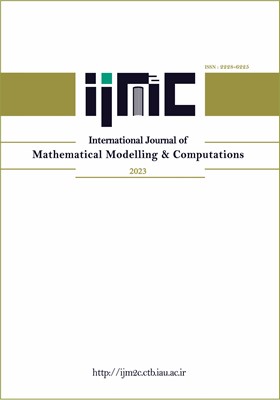Two Methods to Obtain Preferred Efficiency for Negative Data (IS)
Subject Areas : International Journal of Mathematical Modelling & Computations
Hossein Abbasiyan
1
![]() ,
Mohammad Jafar Doostideilami
2
,
Mohammad Jafar Doostideilami
2
1 -
2 -
Keywords: Common weights, interval scale, preferred efficiency, supporting hyper plane,
Abstract :
The original DEA models were applicable only to technologies characterized by positive inputs/outputs. We consider the interval scale (IS) variables especially when the IS variable is a difference of two different variables (like sales etc.) have been used as inputs and/or outputs. We measure Preferred Efficiency (PE) in Data Envelopment Analysis (DEA) with negative data when these data derived from IS variables. The PE is an efficiency concept that takes into account the decision maker’s (DM) preferences. We search the Most Preferred combination of inputs and outputs of Decision Making Units (DMUs) which are efficient in DEA. Also, we approximate indifference contour of the unknown Preferred Function (PF) at Most Preference Solution (MPS) with supporting hyperplane on PPS at MPS. We propose a way to obtain this the supporting hyperplane and also assume this the hyperplane is tangent on the indifference contour of PF. We use from the radial DEA problems with Variable Returns to Scale (VRS) (BCC models) at the combination orientation (both outputs are maximized and inputs are minimized). Also, We decompose each IS variable into two Ratio Scale (RS) variables and then utilizing from a compromise solution approach generate Common Weights (CW) for the decomposed input/output variables. In other to, we will introduce an MOLP model which its objective functions are input/output variables subject to the defining constraints of production possibility set (PPS) of DEA models. Lastly, the procedure and the resulting PE scores are applicable to solving practical problems by the mentioned models.
[1] Charnes W.W., Cooper E., Rhoders, Measuring the efficiency of decision making units, 2(1978) 429-444.
[2] Gerami J., Mozafari M.R., Wanke P.F., Improving information reliability of non-radial value efficiency analysis: An additive shacks based measure approach, European Journal Operational Research, 298(3) (2022) 967-978.
[3] Halme M., Joro T., Koivu M., Dealing with interval scale data in Data Envelopment Analysis, IIASA (1998).
[4] Halme M., Korhonen P., Restricting weights in value efficiency analysis, IIASA (1999).
[5] Halme M., Joro J., Korhonen P., Salo S., Wallenius J., A value efficiency approach to incorporating preference information in data envelopment analysis, Management Science, 45(1999) 103-115.
[6] Joro T., Korhonen P., Zionts S., An interactive approach to improve estimates of value efficiency in data envelopment analysis, European Journal Operational Research, 149(2003) 688-699.
[7] Korhonen P., Siljamaki A., Soismaa M., on the use of value efficiency analysis and further developments, Journal Productivity Analysis, 17(2002) 49-64.
[8] Korhonen P., Syrjanen M.J., on the interpretation of value efficiency, Journal Productivity Analysis, 24(2005) 197-201.
[9] Lovell C.A.K., Pastor J., Units invariant and translation invariant DEA models, Operational Research, 18(1995) 147-151.
[10] Pastor J., Translation invariance in Data Envelopment Analysis: A Generalization, Annals of Operational Research, 66 (1996) 91-102.
[11] Tajik Yabr A.H., Najafi S.E., Moghaddas C., Shahnazaei P., Interval cross efficiency measurement for general two-stage systems, Mathematical preblems in Enginnring Hindawi, Article ID 5431358, 19 pages.
[12] Zohrabandan M., Using Zionts-Wallenius method to improve estimate of value efficiency in DEA, Applied Mathematical Modeling, 35(2011) 3769-3776.


